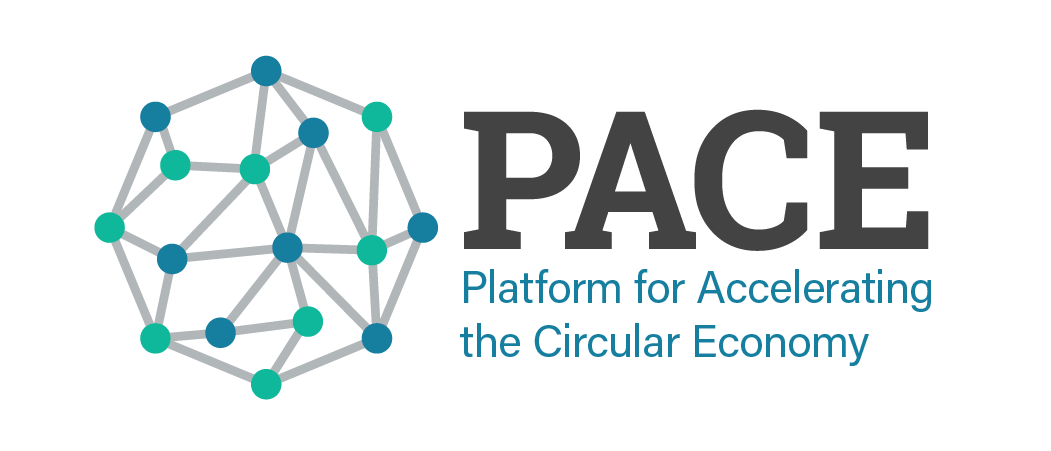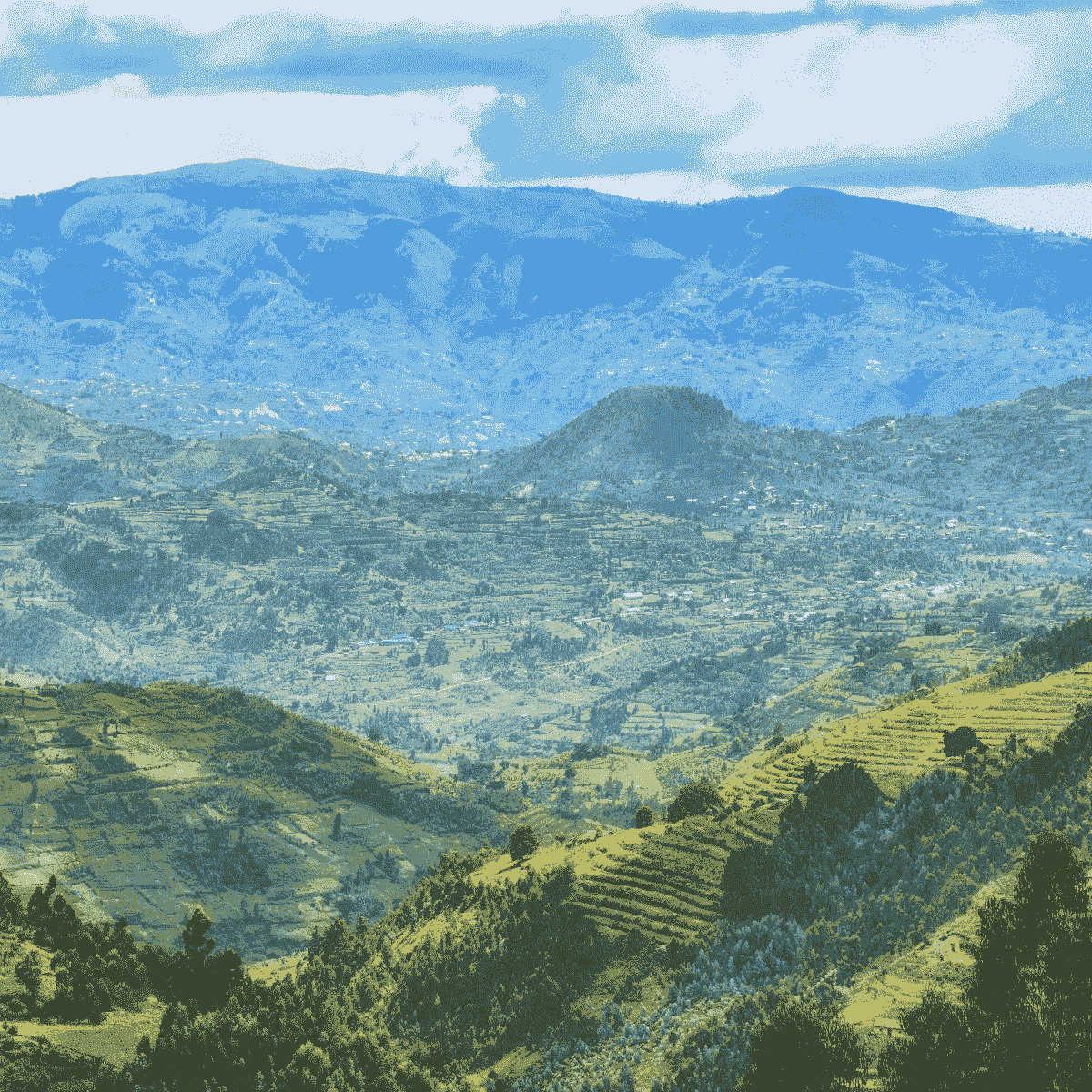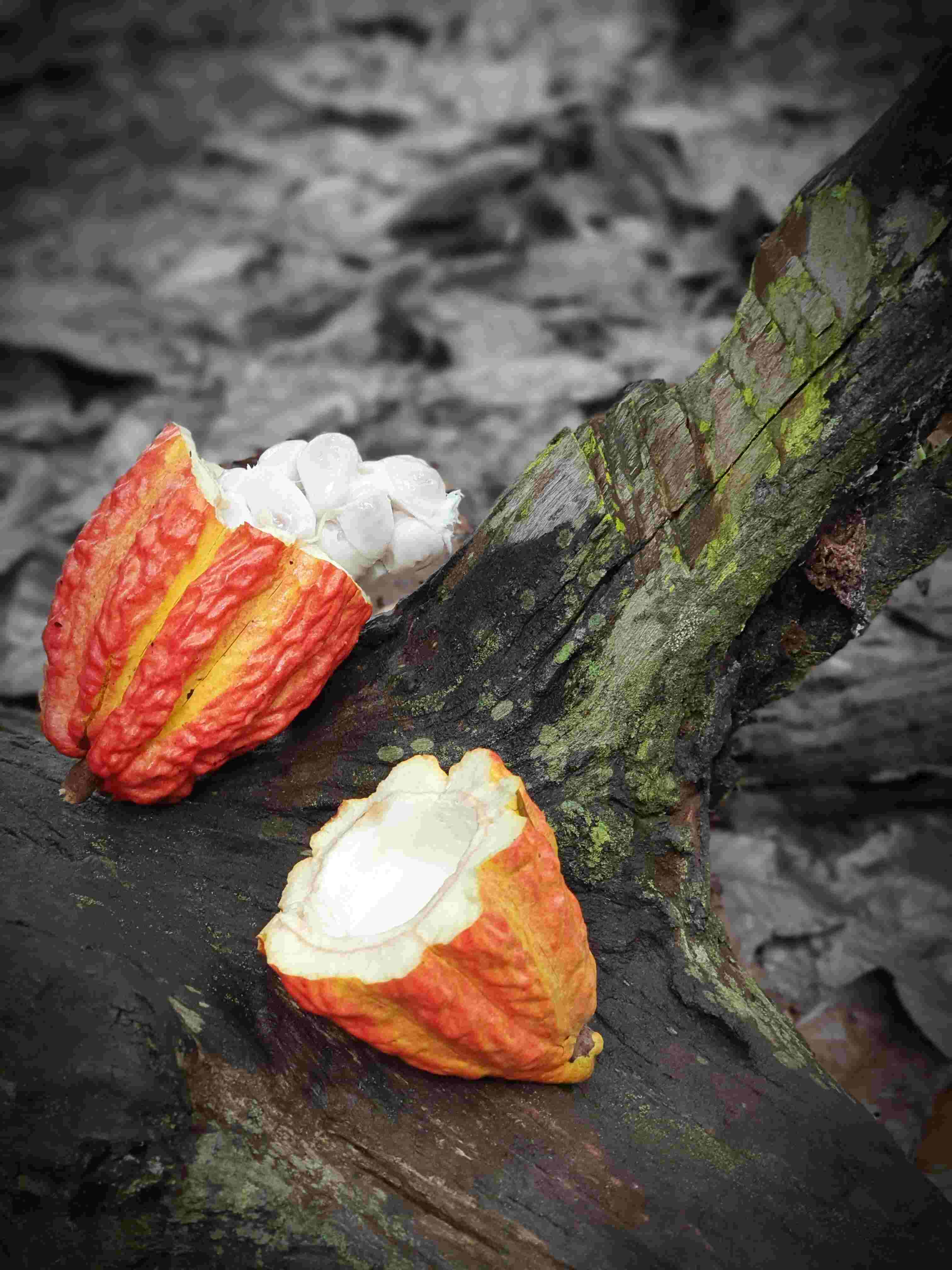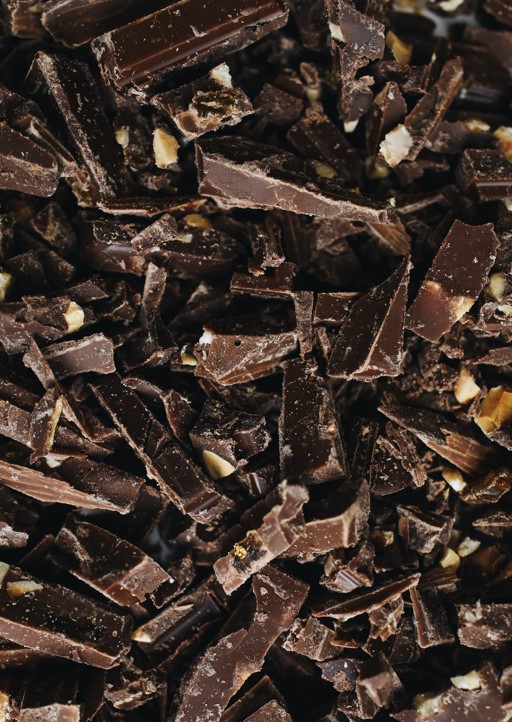Responsible Land Use and Resource Efficiency through Circular Food Production
Article subtitle
Part 1
Part 1
Introduction
Global demand for cocoa is surging, driven primarily by the chocolate industry. In 2021, the market size reached an impressive $46.61 billion, with projections indicating further growth. The global trade value of cocoa beans was no small feat either, amounting to a $9.95 billion in the same year.
While cocoa isn’t a dietary staple, its production is crucial for the livelihoods of smallholder farmers, many of whom are living below the poverty line and rely on cocoa production as their primary source of income. However, cocoa ranks among the world’s top forest-risk commodities, accounting for roughly 2.3 million hectares of forest loss - an area more than half the size of the Netherlands - between 2001 and 2015.
With global demand for cocoa showing no sign of slowing – and more smallholders switching to the crop as climate change strains the world’s coffee output - there is urgent need to support farmers in sustainably increasing their income, without increasing pressure on the world’s forested land. While reforms in subsidies, global trade and land ownership are all necessary in shifting cocoa production onto a sustainable and equitable track, it is equally important to ensure that the resources used to grow the crop are leveraged for maximum efficiency. New research from PACE reveals that the cocoa value chain holds considerable circular potential, with win-wins for both smallholders and the environment to be gained by recapturing commonly discarded cocoa by-products such as pod husk, bean shell, and pulp.
This article will outline how re-capturing commonly wasted resources along the cocoa value chain is possible and can have positive impacts on both the environment and small holder farmer livelihoods.
Cocoa’s land impacts: a closer look
The cocoa industry’s deforestation and land use footprint highlights its significance in the global fight against climate change and biodiversity loss, with 12 million hectares of land worldwide used to grow the crop - the majority of which are in forested areas of West Africa. The International Cocoa Organization (ICCO) estimates that 90% of the world's cocoa volume is produced on 2–5-hectare farms, with smallholder farmers living on as little as $2 per day. On average, cocoa farmers receive just 8% of the final price of a chocolate bar in payments for their produce, meaning they often lack the resources to invest in sustainable yield-improving activities, which tend to come with a higher upfront cost and a longer return-on-investment period. As a result, many farmers are faced with no choice but to move their plantations when their productivity peaks, clearing forests to keep up with global demand, rather than replenishing the same land through regenerative practices such as agroforestry. Breaking the vicious cycle of poverty and deforestation that riddles cocoa value chains is not only highly possible, but necessary to deliver on global targets, such as the Paris Agreement, Global Biodiversity Framework and 2030 Sustainable Development Agenda.
Resource inefficiency in the cocoa value chain
While demand for cocoa is high, a considerable portion of the cacao fruit is discarded, leading to missed opportunities for resource efficiency. Approximately 75% of the cacao fruit is discarded once the beans have been harvested. Compared with another demand-high commodity, coffee cherry biomass, this is 30% higher. This practice results in 700,000 tonnes of organic waste each year.
The production of cocoa results in four main by-products:
- cacao pod husk
- cacao pod ash
- cacao mucilage
- cacao bean shell
Once the cacao fruit is harvested, the pod is opened, and the resulting cacao pod husk is discarded. The cocoa beans, surrounded by mucilaginous pulp, are then sent for fermentation. During fermentation, approximately 80% of the residual fermented cacao pulp is also discarded. The resulting beans are dried and roasted, leaving behind the discarded residual cocoa bean shell. The dominant practice comes at a high cost to both people and the environment, as it generates multiple negative consequences, such as water and soil contamination, which in turn leads to crop infestation, decreased productivity and risks to human health.
Despite the current waste management practice of cacao fruit, there are many versatile uses of cacao. Post-harvest waste can be used for various purposes, such as usable biomass for food, cosmetic industry, chemical products, even biofuels.
Let's take a deeper look into the many ways cacao by-products can be used.
Cocoa pod husks
Animal feed: Studies have begun to demonstrate the potential for cocoa pod husks to be used as a source for animal feed. The use of cacao pod husks shows promising opportunity as studies have indicated treated cacao husk could potentially substitute 30% of maize based animal feed.
Compost: Cacao pod husks are a high-quality input for biochar. Research has demonstrated that compost made from cacao pod husk is effective at improving soil quality as well as inhibiting the common black pod disease.
Energy: Cocoa pod husk is also well suited as a biomass source for electricity production. The waste ash is rich in potassium which can be converted in various chemical products, most notably, high-purity potassium carbonate. For every ton of cocoa pod husk, 60kg of potassium carbonate and 30kg of a calcium/magnesium solid are created. In addition, cacao pod husks can be use for clean-burning biomass briquettes and pellets. Research has been conducted on using cocoa pod husks to generate electrical energy in Uganda, which faces significant electric power supply obstacles that impact those living in rural areas. The ability to use cocoa pod husk for electricity production can help provide a more reliable source of electricity which could bring many benefits beyond farming.
Cocoa pod ash
Fertilizer: Cocoa pod ash, which is rich in potassium also has practical uses and can easily be used in fertilizer when combined with starch. This innovative approach supports cocoa farmers in replenishing essential soil elements using cocoa pod husk as biofertilizer.
Soap: In West African countries, cocoa pod ash plays a pivotal role in crafting the globally popular African Black Soap. Here, the husks are dried and burned to create ash, which contains 40% potassium. This ash acts as a catalyst in the saponification process (the process of converting esters into soaps and alcohols). Notably, the soap-making process relies on a simple clay oven, making it an accessible method for soap production on a global scale. African Black Soap provides a blueprint of a successful circular business model that works to recapture commonly discarded resources.
Cocoa Pulp (Mucilage or Baba)
Food and beverage consumption: Cocoa pulp can be upcycled for its food and beverage consumption as it is known for its sweet and nutritious qualities. The cocoa pulp is often enjoyed by cocoa farmers and local communities, it has become a key ingredient in the production of cacao pulp drinks. The pulp has been commercialized with various companies specializing in cacao pulp drinks, such as Kumasi and Pacha De Cacao. While cocoa pulp would typically be discarded in the cocoa harvesting it has found another life, demonstrating how circular practices can be embedded in the product value chain that results in a reduction of waste and the creation of value.
Cocoa Bean Shells
Cocoa bean shells can be utilized as mulch to suppress weed invasion in perennial fruit crops, gardens, and urban landscapes. Cocoa shells can reduce weeds organically and retain moisture in garden beds. Biochar made from cocoa shells is also a natural fertilizer. While it is currently unknown how many farms are utilizing cocoa shells directly on their fields, the use of this byproduct presents opportunities to share knowledge between farmers so innovation and agriculturally friendly practices can be scaled.
Conclusion
In the world of cocoa production, the untapped potential of cocoa by-products is high and remains poorly known. The process of cultivation of the cocoa beans to the final product of chocolate needs to be examined, as it is currently following a linear process that fails to capture valuable resources. This dominant approach fails to address the environmental and socio-economic challenges faced by smallholder farmers, instead it continues a cycle of environmental degradation and exploitation.
Smallholder farmer livelihoods and household incomes can be improved by adopting circular practices that create new revenue streams by using cocoa by-products. A leading example of this is Vietnam’s Bean to Bar project, which is helping cocoa farmers to implement closed loop and circular production practices within cocoa production.
Responsible land use and resource efficiency provide an alternative approach to recapture resources along the value chain. By harnessing the versatile uses of the cocoa fruit from, animal feed to electricity production, biofertilizers, soap and beverages, we can unlock opportunities for benefits for the environment to livelihood improvements.




